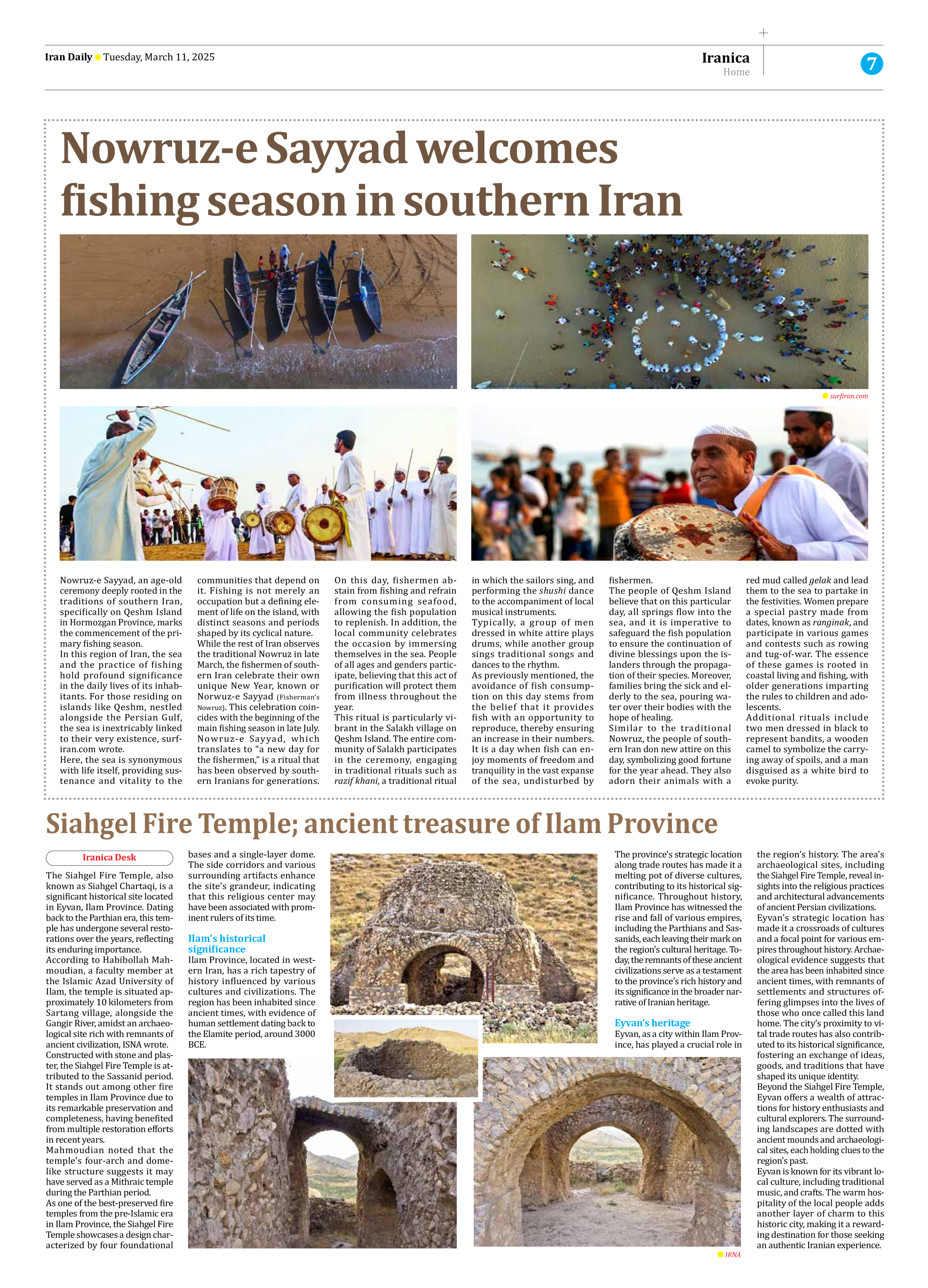
Nowruz-e Sayyad welcomes fishing season in southern Iran
Nowruz-e Sayyad, an age-old ceremony deeply rooted in the traditions of southern Iran, specifically on Qeshm Island in Hormozgan Province, marks the commencement of the primary fishing season.
In this region of Iran, the sea and the practice of fishing hold profound significance in the daily lives of its inhabitants. For those residing on islands like Qeshm, nestled alongside the Persian Gulf, the sea is inextricably linked to their very existence, surfiran.com wrote.
Here, the sea is synonymous with life itself, providing sustenance and vitality to the communities that depend on it. Fishing is not merely an occupation but a defining element of life on the island, with distinct seasons and periods shaped by its cyclical nature.
While the rest of Iran observes the traditional Nowruz in late March, the fishermen of southern Iran celebrate their own unique New Year, known or Norwuz-e Sayyad (Fisherman’s Nowruz). This celebration coincides with the beginning of the main fishing season in late July.
Nowruz-e Sayyad, which translates to “a new day for the fishermen,” is a ritual that has been observed by southern Iranians for generations. On this day, fishermen abstain from fishing and refrain from consuming seafood, allowing the fish population to replenish. In addition, the local community celebrates the occasion by immersing themselves in the sea. People of all ages and genders participate, believing that this act of purification will protect them from illness throughout the year.
This ritual is particularly vibrant in the Salakh village on Qeshm Island. The entire community of Salakh participates in the ceremony, engaging in traditional rituals such as razif khani, a traditional ritual in which the sailors sing, and performing the shushi dance to the accompaniment of local musical instruments.
Typically, a group of men dressed in white attire plays drums, while another group sings traditional songs and dances to the rhythm.
As previously mentioned, the avoidance of fish consumption on this day stems from the belief that it provides fish with an opportunity to reproduce, thereby ensuring an increase in their numbers. It is a day when fish can enjoy moments of freedom and tranquility in the vast expanse of the sea, undisturbed by fishermen.
The people of Qeshm Island believe that on this particular day, all springs flow into the sea, and it is imperative to safeguard the fish population to ensure the continuation of divine blessings upon the islanders through the propagation of their species. Moreover, families bring the sick and elderly to the sea, pouring water over their bodies with the hope of healing.
Similar to the traditional Nowruz, the people of southern Iran don new attire on this day, symbolizing good fortune for the year ahead. They also adorn their animals with a red mud called gelak and lead them to the sea to partake in the festivities. Women prepare a special pastry made from dates, known as ranginak, and participate in various games and contests such as rowing and tug-of-war. The essence of these games is rooted in coastal living and fishing, with older generations imparting the rules to children and adolescents.
Additional rituals include two men dressed in black to represent bandits, a wooden camel to symbolize the carrying away of spoils, and a man disguised as a white bird to evoke purity.







